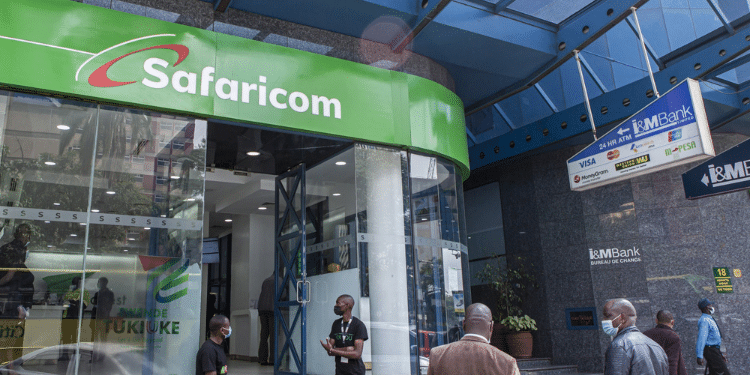The Common Market for Eastern and Southern Africa (Comesa) has embarked on a transformative journey to streamline trade among its 21 member states with the launch of an electronic certificate of origin (e-CO) system.
Certificates of Origin are provided to exporters within the COMESA Free Trade Area (FTA) to grant preferential treatment to products originating from member states of the FTA.
This digital innovation, a cornerstone of the COMESA-EAC-SADC Tripartite Free Trade Area (TFTA) agreement that came into force in July 2024, promises to shift trade within the region.
Breaking Down Barriers: A Digital Solution for African Trade
For decades, paper-based systems have plagued intra-regional trade within Africa, hindering the free flow of goods and services. Comesa, established in 1994, has long recognised the need for a more efficient and streamlined approach.
The new e-CO system, currently operational in Eswatini, Malawi, and Zambia, represents a significant step towards this goal.
Key Features of the Comesa e-CO System:
- Enhanced Efficiency: The e-CO system leverages technology to expedite trade processes, reducing delays at border crossings and minimising bureaucratic hurdles. Real-time tracking and secure data exchange between customs authorities streamline customs clearance procedures.
- Reduced Costs: By eliminating the need for paper documentation, the e-CO system significantly reduces administrative costs for businesses, particularly small and medium enterprises (SMEs). This cost-effectiveness encourages greater participation in regional trade.
- Increased Transparency and Security: The digital platform enhances transparency and security by minimising the risk of fraud and forgery of certificates of origin. This not only protects businesses from counterfeit documents but also increases government revenue.
- Flexibility and Inclusivity: Recognising the diverse trade needs within the region, the Comesa e-CO system is designed to accommodate both TFTA and Comesa certifications. This flexibility ensures that the system can cater to the specific requirements of different trading arrangements.
- Supporting Small-Scale Traders: The initiative explicitly includes the Simplified Trade Regime (STR) for small-scale cross-border traders, ensuring that these crucial players in the regional economy can also benefit from the advantages of the e-CO system.
READ ALSO:
The Rise of Digital Tax Stamps and Electronic Cargo Tracking in East Africa for Promoting Trade Integrity
Early Successes and Continental Aspirations
Early pilot results from Eswatini are already demonstrating the transformative power of this technology. Processing times for certificates of origin have been dramatically reduced from three days to under an hour.
This significant improvement mirrors the success of similar digital trade facilitation programs in Asia, where electronic documentation has been shown to boost intra-regional trade by approximately 35%.
Given that COMESA member states collectively represent a substantial portion of Africa’s GDP (60% or $1.88 trillion), the success of the eCO system could serve as a valuable blueprint for continental trade digitalisation.
Overcoming Past Challenges
While the decision to adopt eCOs was made in 2014, implementation has been delayed due to the lack of necessary regulations within the COMESA Rules of Origin (RoO). However, significant progress has been made recently:
- Regulatory Framework: The 40th Meeting of the Council of Ministers in November 2023 approved the draft regulations for implementing the COMESA eCO system. This crucial step provides the legal framework necessary for the successful rollout of eCOs.
- Technical Review: A Technical Working Group (TWG) on Rules of Origin has been established to review the existing RoO to ensure compatibility with the eCO system and other trade facilitation instruments. This review will help to streamline processes and eliminate any inconsistencies that may hinder the smooth implementation of eCOs.
A Pivotal Shift Towards Digital Trade
The digitalisation of trade documentation marks a pivotal shift for Africa. By embracing technology, Comesa aims to overcome the historical barriers that have stifled intra-regional trade.
This move is particularly crucial considering that intra-COMESA trade currently stands at a mere 8%, lagging significantly behind other regional blocs like Europe (67%) and Asia (61%).
Streamlining Trade with Electronic Certificates of Origin
The Electronic certificate of origin e co system pdf is a critical resource for businesses seeking to streamline their trade documentation process.
To simplify customization, the Electronic certificate of origin e co system template provides a standardized format for creating these certificates.
Users can also access the Electronic certificate of origin e co system download option for quick integration into their workflows. For guidance, the Electronic certificate of origin e co system sample offers a practical example of how the system works.
READ ALSO:
KRA’s AI-Driven Strategy to Tackle Tax Evasion
Additionally, the COMESA certificate of Origin Kenya and the COMESA Certificate of Origin Egypt are essential for exporters in these regions to facilitate smoother trade within the COMESA bloc.
Looking Ahead: A Harmonised Future for African Trade
The launch of the e-CO system is just the beginning. Comesa, under the leadership of Secretary-General Chileshe Mpundu Kapwepwe, is committed to further harmonising trade facilitation instruments across its member states.
Beginning in January 2025, efforts will focus on streamlining other trade-related processes to create a more seamless and integrated trading environment within the region.







Leave a Reply